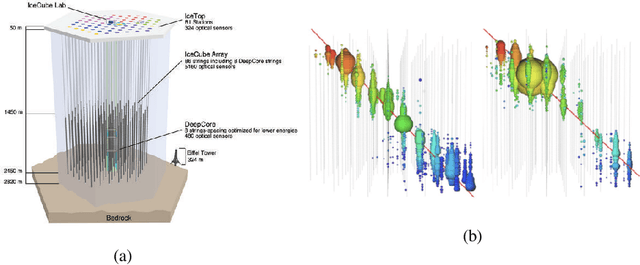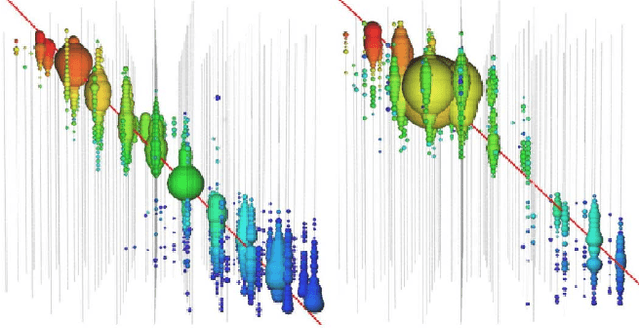Zahra Ronaghi
The use of Convolutional Neural Networks for signal-background classification in Particle Physics experiments
Feb 13, 2020



Abstract:The success of Convolutional Neural Networks (CNNs) in image classification has prompted efforts to study their use for classifying image data obtained in Particle Physics experiments. Here, we discuss our efforts to apply CNNs to 2D and 3D image data from particle physics experiments to classify signal from background. In this work we present an extensive convolutional neural architecture search, achieving high accuracy for signal/background discrimination for a HEP classification use-case based on simulated data from the Ice Cube neutrino observatory and an ATLAS-like detector. We demonstrate among other things that we can achieve the same accuracy as complex ResNet architectures with CNNs with less parameters, and present comparisons of computational requirements, training and inference times.
Graph Neural Networks for IceCube Signal Classification
Sep 17, 2018



Abstract:Tasks involving the analysis of geometric (graph- and manifold-structured) data have recently gained prominence in the machine learning community, giving birth to a rapidly developing field of geometric deep learning. In this work, we leverage graph neural networks to improve signal detection in the IceCube neutrino observatory. The IceCube detector array is modeled as a graph, where vertices are sensors and edges are a learned function of the sensors' spatial coordinates. As only a subset of IceCube's sensors is active during a given observation, we note the adaptive nature of our GNN, wherein computation is restricted to the input signal support. We demonstrate the effectiveness of our GNN architecture on a task classifying IceCube events, where it outperforms both a traditional physics-based method as well as classical 3D convolution neural networks.
 Add to Chrome
Add to Chrome Add to Firefox
Add to Firefox Add to Edge
Add to Edge